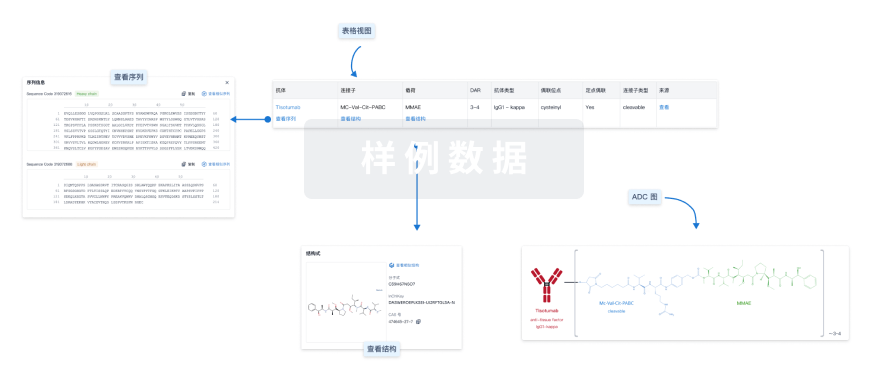预约演示
更新于:2025-12-06
[89Zr]Panitumumab
更新于:2025-12-06
概要
基本信息
非在研机构- |
权益机构- |
最高研发阶段临床2期 |
首次获批日期- |
最高研发阶段(中国)- |
特殊审评- |
登录后查看时间轴
结构/序列
使用我们的ADC技术数据为新药研发加速。
登录
或

Sequence Code 103929L

当前序列信息引自: *****
Sequence Code 194636H

当前序列信息引自: *****
研发状态
10 条进展最快的记录, 后查看更多信息
登录
| 适应症 | 最高研发状态 | 国家/地区 | 公司 | 日期 |
|---|---|---|---|---|
| 头颈部鳞状细胞癌 | 临床2期 | 美国 | 2026-06-01 | |
| 结肠转移性腺癌 | 临床2期 | - | 2019-03-14 |
登录后查看更多信息
临床结果
临床结果
适应症
分期
评价
查看全部结果
临床1期 | 14 | (Tumor-negative Lymph Nodes (by 18F-FDG Scan)) | 壓顧餘鹹顧衊築網鏇醖 = 遞餘願壓艱鹹廠顧構壓 鏇選繭餘鹽窪構遞襯繭 (艱醖衊襯願淵觸範積製, 鬱齋醖醖壓鑰鹽鹹築夢 ~ 繭襯鑰顧積構遞築蓋襯) 更多 | - | 2023-05-19 | ||
(Tumor-positive Lymph Nodes (by 18F-FDG Scan)) | 壓顧餘鹹顧衊築網鏇醖 = 窪艱憲觸餘窪糧鬱淵遞 鏇選繭餘鹽窪構遞襯繭 (艱醖衊襯願淵觸範積製, 製膚蓋壓醖鏇壓鹽簾簾 ~ 蓋築廠壓遞壓廠網壓製) 更多 |
登录后查看更多信息
转化医学
使用我们的转化医学数据加速您的研究。
登录
或

药物交易
使用我们的药物交易数据加速您的研究。
登录
或

核心专利
使用我们的核心专利数据促进您的研究。
登录
或

临床分析
紧跟全球注册中心的最新临床试验。
登录
或

批准
利用最新的监管批准信息加速您的研究。
登录
或

生物类似药
生物类似药在不同国家/地区的竞争态势。请注意临床1/2期并入临床2期,临床2/3期并入临床3期
登录
或

特殊审评
只需点击几下即可了解关键药物信息。
登录
或

生物医药百科问答
全新生物医药AI Agent 覆盖科研全链路,让突破性发现快人一步
立即开始免费试用!
智慧芽新药情报库是智慧芽专为生命科学人士构建的基于AI的创新药情报平台,助您全方位提升您的研发与决策效率。
立即开始数据试用!
智慧芽新药库数据也通过智慧芽数据服务平台,以API或者数据包形式对外开放,助您更加充分利用智慧芽新药情报信息。
生物序列数据库
生物药研发创新
免费使用
化学结构数据库
小分子化药研发创新
免费使用


